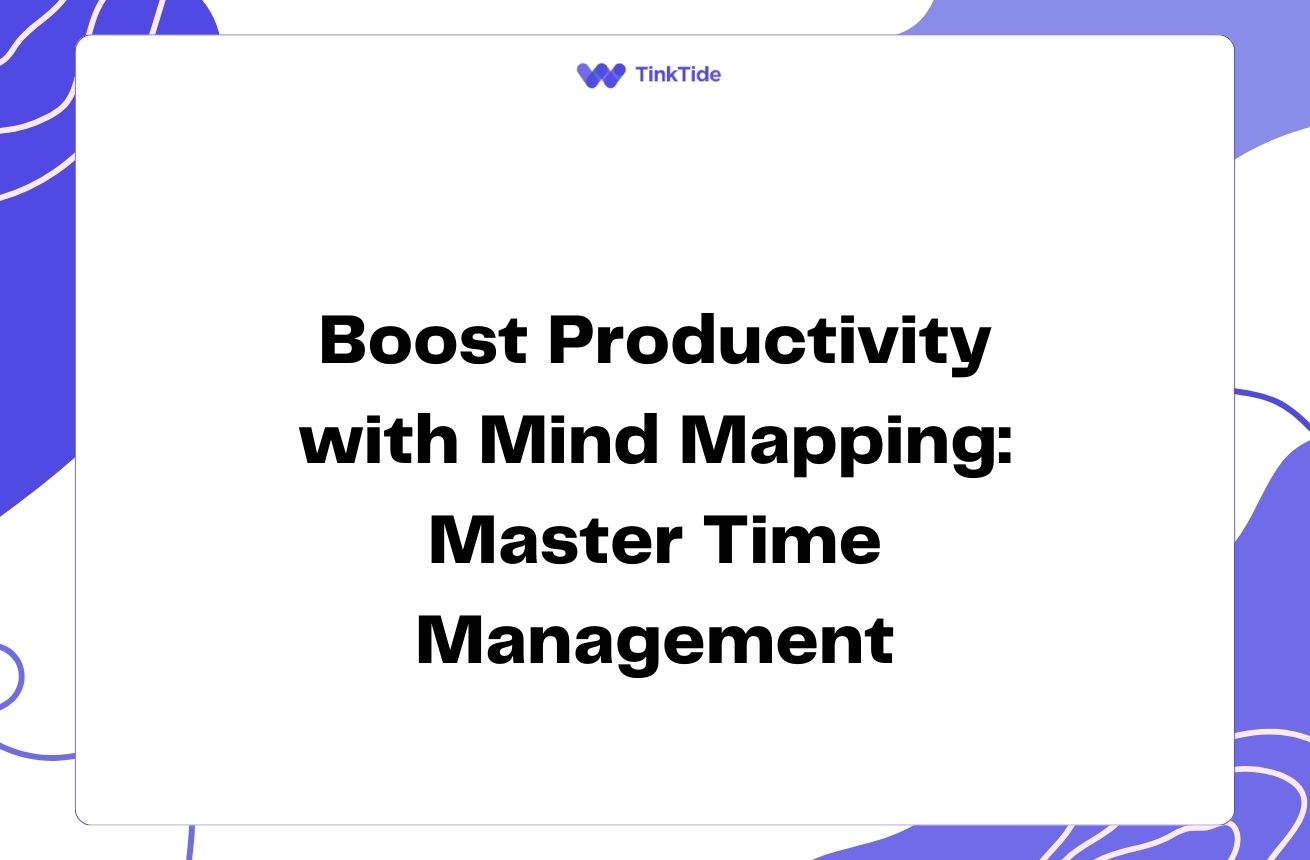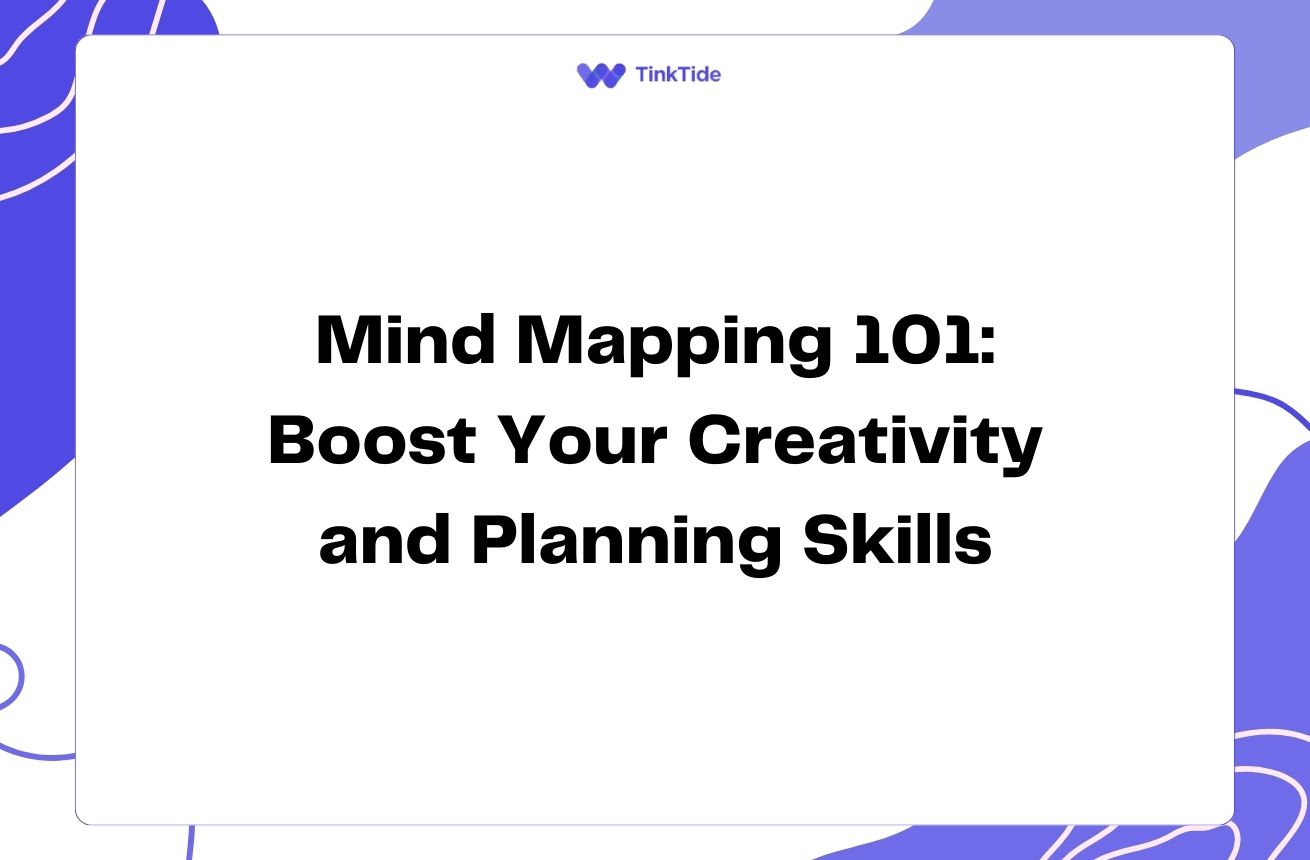Boost Your Brainstorming with Mind Mapping Techniques
Understanding Mind Mapping
Mind mapping is a powerful visual thinking tool that can significantly enhance your brainstorming sessions. It's a diagram used to organize information in a way that mirrors how our brains naturally process and connect ideas. By using colors, images, and branching structures, mind maps make it easier to see relationships between concepts and generate new ideas.
The beauty of mind mapping lies in its simplicity and flexibility. You start with a central idea and branch out into related subtopics, creating a tree-like structure. This approach allows for non-linear thinking, helping you explore multiple paths and connections simultaneously. As a result, you can uncover insights and solutions that might not be apparent with traditional linear note-taking methods.
Research has shown that mind mapping can improve memory retention and creative thinking. A study published in the Journal of Learning and Individual Differences found that students who used mind maps scored higher on tests and reported better understanding of complex topics compared to those who used traditional study methods.
Benefits of Mind Mapping in Brainstorming
Incorporating mind mapping into your brainstorming sessions can lead to numerous benefits:
- Enhanced creativity and idea generation
- Improved organization and structure of thoughts
- Better visualization of complex problems
- Increased engagement and participation in group sessions
- Easier identification of patterns and connections
Getting Started with Mind Mapping
To begin mind mapping, you'll need a large sheet of paper or a digital mind mapping tool. Start by writing your main topic or problem in the center of the page. From there, draw branches to represent main subtopics or categories related to your central idea.
As you brainstorm, add more branches and sub-branches to explore different aspects of each subtopic. Use colors, symbols, and images to make your mind map more visually appealing and memorable. Don't worry about creating a perfect structure initially – the goal is to get your ideas flowing freely.
Digital mind mapping tools like MindMeister or XMind offer additional features such as collaboration, easy editing, and integration with other productivity tools. These can be particularly useful for remote brainstorming sessions or when working with large teams.
Structuring Ideas with Mind Maps
One of the key advantages of mind mapping in brainstorming is its ability to help structure ideas. As you create your mind map, you'll naturally group related concepts together, making it easier to see the big picture and identify gaps in your thinking.
To further structure your ideas, consider using different colors or shapes for various categories or priorities. For example, you might use red for urgent items, green for new ideas, and blue for established concepts. This visual coding can help you quickly identify patterns and prioritize your thoughts.
After your initial brainstorming session, take some time to review and refine your mind map. Look for connections between different branches and consider how you can reorganize or combine ideas to create a more cohesive structure. This process can lead to new insights and a clearer understanding of the problem or topic at hand.
Enhancing Group Brainstorming with Mind Maps
Mind mapping can be particularly effective in group brainstorming sessions. It provides a visual focal point for discussions and allows all participants to see how their ideas fit into the bigger picture. This can lead to more productive and engaging sessions.
To use mind mapping in a group setting, consider projecting the mind map onto a large screen or using a shared digital workspace. Encourage all participants to contribute ideas and build upon each other's thoughts. The visual nature of mind maps can help overcome language barriers and make it easier for everyone to follow the flow of ideas.
Research from the Journal of Creative Behavior suggests that collaborative mind mapping can lead to more innovative solutions compared to traditional brainstorming methods. The study found that groups using mind maps generated a higher number of unique ideas and were better able to integrate different perspectives.
Mind Mapping Best Practices
To get the most out of mind mapping in your brainstorming sessions, consider these best practices:
- Keep it simple: Use single words or short phrases for each branch
- Use images: Incorporate visual elements to make your map more memorable
- Create hierarchy: Use thicker lines for main branches and thinner ones for sub-branches
- Stay flexible: Don't be afraid to rearrange or add new branches as your ideas evolve
- Review and refine: Regularly revisit your mind map to identify new connections and insights
From Mind Map to Action Plan
Once you've created a comprehensive mind map, it's time to transform your ideas into actionable plans. Review your map and identify the most promising concepts or solutions. You can use numbering or symbols to prioritize items and create a clear sequence of steps.
Consider creating a separate, more linear document that outlines specific tasks, deadlines, and responsibilities based on your mind map. This can serve as a bridge between the creative brainstorming phase and the practical implementation of your ideas.
Remember that mind mapping is an iterative process. As you begin to implement your ideas, return to your mind map to track progress, make adjustments, and explore new avenues that may arise during execution.
Address common questions
Here are some frequently asked questions about using mind mapping for brainstorming:
How is mind mapping different from traditional brainstorming?
Mind mapping is a visual technique that allows for non-linear thinking and easier identification of connections between ideas. Traditional brainstorming often relies on linear lists, which can limit creativity and make it harder to see relationships between concepts.
Can mind mapping be used for individual brainstorming?
Absolutely! Mind mapping is an excellent tool for individual brainstorming. It can help you organize your thoughts, explore different angles of a problem, and generate new ideas more effectively than traditional note-taking methods.
What types of problems or projects are best suited for mind mapping?
Mind mapping is versatile and can be applied to a wide range of problems and projects. It's particularly useful for complex issues that require exploring multiple perspectives, creative projects that benefit from free-flowing ideas, and strategic planning that involves considering various interconnected factors.
How long should a mind mapping session last?
The duration of a mind mapping session can vary depending on the complexity of the topic and the number of participants. For individual sessions, 15-30 minutes can be productive. For group sessions, aim for 45-60 minutes, with breaks for longer sessions to maintain focus and energy.
Are there any downsides to using mind mapping for brainstorming?
While mind mapping is generally beneficial, it may not suit everyone's thinking style. Some people might find the non-linear approach confusing initially. Additionally, very large mind maps can become cluttered and overwhelming if not properly organized. It's important to find a balance and combine mind mapping with other techniques as needed.
Provide additional resources
The Mind Map Book
A comprehensive guide to mind mapping by Tony Buzan, the creator of modern mind mapping
Coggle
A free online tool for creating collaborative mind maps
Mind Mapping for Kids
Resources for teaching mind mapping to children and young learners
Mind Mapping in Education
A research paper exploring the benefits of mind mapping in educational settings
Visual Thinking Course
An online course that covers mind mapping and other visual thinking techniques
Summarize key takeaways
Mind mapping is a powerful tool that can significantly enhance your brainstorming sessions. By providing a visual structure for your thoughts, it allows for more creative and organized idea generation. The non-linear nature of mind maps helps you see connections between concepts that might otherwise go unnoticed.
Whether you're working individually or in a group, mind mapping can lead to more structured ideas, improved problem-solving, and increased engagement. By following best practices and using digital tools when appropriate, you can harness the full potential of mind mapping to boost your creativity and productivity.
Start incorporating mind mapping into your next brainstorming session and experience the difference it can make in your idea generation and problem-solving processes. With practice, you'll find that mind mapping becomes an invaluable tool in your creative and professional toolkit.
Elevate Your Brainstorming with Tinktide
Ready to take your brainstorming to the next level? Try Tinktide's innovative mind mapping tools today.
Start Your Free Trial
